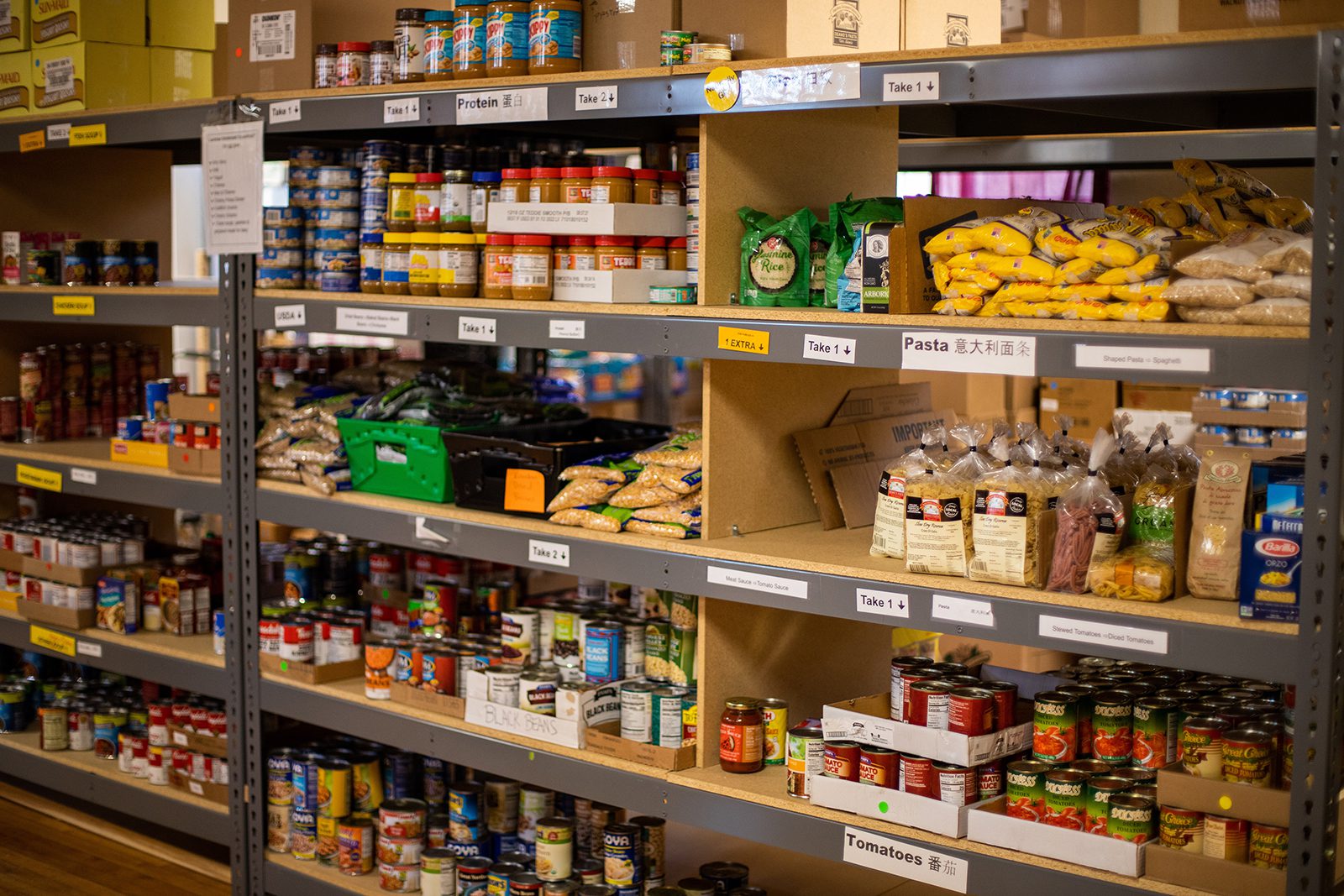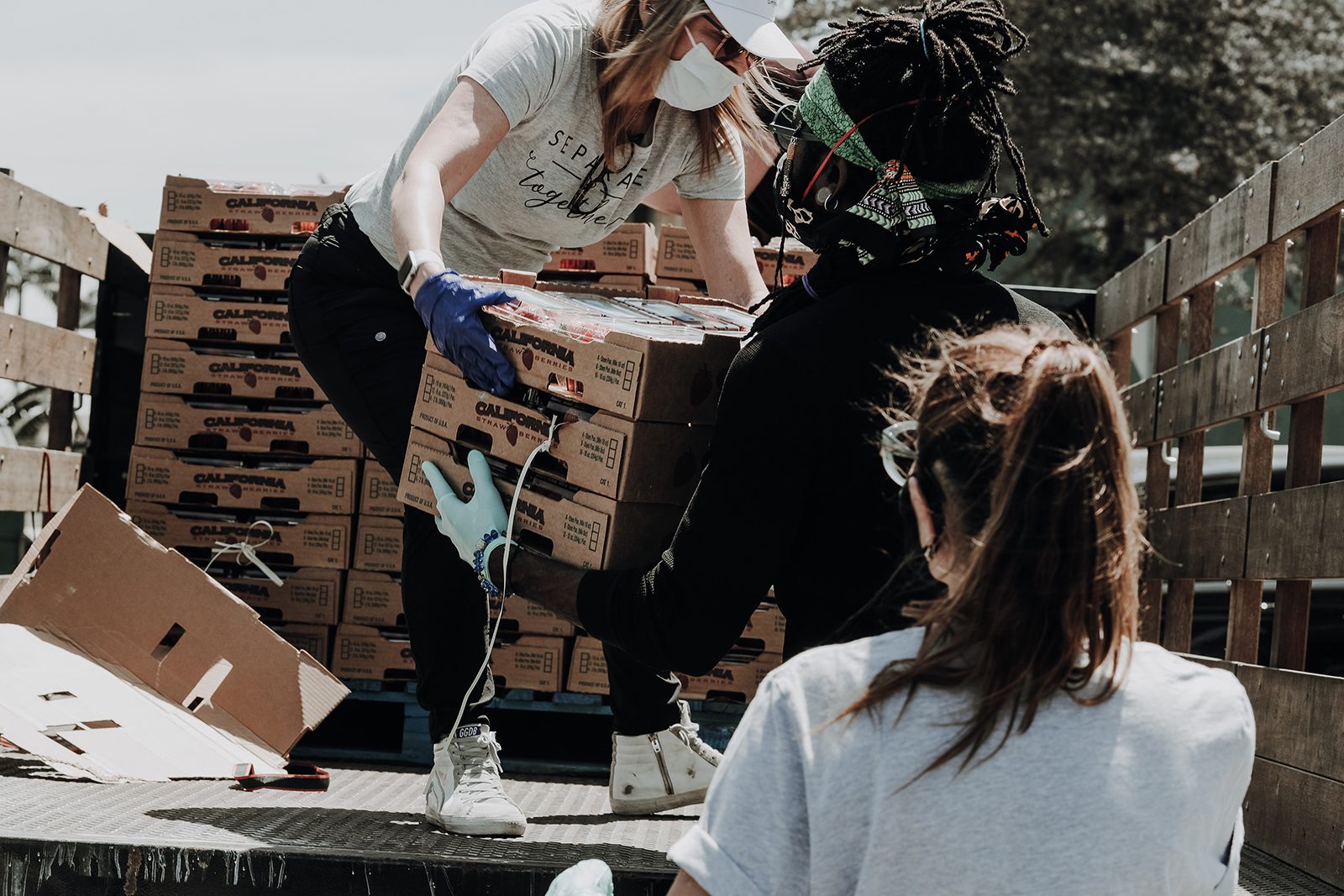Inflation boosts demand at food banks as pandemic anti-hunger measures fall away
[ad_1]
(RNS) — At the 7 Loaves Food stuff Pantry at St. Andrew’s United Methodist Church in Plano, Texas, volunteers have been serving 800 to 1,200 family members a week considering that the COVID-19 pandemic started — about 4 moments the weekly targeted visitors in 2019.
At the ICNA Aid Food Pantry in Raytown, Missouri, just east of Kansas Town, 100 new families have registered to get the Muslim-led organization’s companies in just the earlier thirty day period.
“We are busier than at any time appropriate now,” stated Shannon Cameron, executive director of the Aurora Area Interfaith Food items Pantry in Aurora, Illinois, wherever, after a slight dip about tax return time, among 30 and 60 new households are registering each individual week.
The inflation that has loomed in excess of the overall economy and restricted several Americans’ paying for ability of late has doubly influenced reduced-revenue men and women who previously struggle to get by. A latest study by the anti-starvation firm Feeding The usa has shown that enhanced demand from customers has afflicted just about 80% of U.S. foods banking companies, as greater selling prices result in additional households to seek aid.
Associated: COVID-19, food stuff disaster give new lifetime to historic observe of gleaning
And although President Joe Biden lately signed the Hold Young ones Fed Act, extending free of charge food programs for schoolchildren, several stopgaps funded throughout the pandemic have finished or are only accessible in some states.
“For the households that had been presently foods insecure in 2020, nearly 50 % of all those noted making use of a food stuff pantry,” said Jordan Teague, interim director for policy examination and coalition making at Bread for the World. “Now, additional individuals are struggling with the disaster. We’re all type of sensation that pinch, and govt programs are coming to an end.”

Nonperishable things at a food items financial institution. Image by Aaron Doucett/Unsplash/Resourceful Commons
Considering that the 1980s, the U.S. Department of Agriculture has donated surplus commodities it purchases to stabilize farm costs to the Charitable Food Assistance Program, a community of food items banking companies. For 4 yrs, the Trump administration bolstered the system to offset the price tag of its tariff boosts, raising the share of the USDA’s contributions to as a lot as 15% of some foods banks’ provides. These assets, much too, have now tailed off.
“We noticed a actual increase even in advance of the pandemic strike in people USDA commodities and, certainly, for the duration of the pandemic, USDA produced a lot more commodities readily available as perfectly,” mentioned Celia Cole, CEO of Feeding Texas, a meals security group primarily based in Austin. “Now, with no them, we’re observing a drop-off.”
Food items financial institutions are wanting more than at any time to make up the gaps with private financial donations, and govt financial assistance. “For each individual dollar donated to a foods bank, we can stretch it to 4 foods,” explained Cole. “We motivate people to be educated with their elected officials in support of hunger-preventing courses like SNAP and the Kid Diet Systems.”
Traditionally higher gas rates have extra even more pressure on nearby food stuff pantries, producing delays in the transportation of food items from farm to industry, and from market to food items banking institutions.
“We individual a fleet of semis,” mentioned Mike Hoffman, stock and logistics director at Midwest Meals Bank, a Christian charity that supplies much more than 2,000 churches, nonprofits and local community centers across the state. “Fuel charges have taken a toll. We have absent via our overall year’s gasoline spending budget in the to start with five months.”
The same source chain problems, together with a lack of offered truck motorists, that have beset the economic system implement to preventing hunger as effectively. Barbara Wojtklewicz, aspect of the management workforce that runs the foodstuff pantry at Christ Church in Plymouth, Massachusetts, reported staff at the Bigger Boston Food items Lender, a regional community of 600 meals distributors, have documented driver shortages recently.
“There is ample foodstuff to distribute,” Wojtklewicz advised Religion News Company, “but they’ve experienced to limit … distribution to distinct food items pantries.”
Maj. Deb Coolidge at the Salvation Army’s foods distribution center in Plymouth has had difficulty sourcing new foodstuff. “Less salad mix and cucumber — oranges and apples,” Coolidge explained. “Those have not been on the list for the very last pair of months.”
At ICNA Reduction in Missouri, Ferdous Hossain, associate operations coordinator, has furthermore identified it progressively difficult to supply contemporary generate to the 300 family members who rely on the pantry for food stuff assistance every thirty day period. Community organizations, farms and food items banking companies that ICNA collaborates with are also experience the deliver pinch.

Stawberries are sent to a foodstuff financial institution during the pandemic in 2020. Photograph by Joel Muniz/Unsplash/Imaginative Commons
To live up to her center’s unofficial motto — “Fresh generate. Refreshing fruit. Everything and every little thing that is fresh” — Hossain has been purchasing create at the grocery keep, a previous vacation resort since of bigger rates.
Donors are also stepping up, thinking creatively to assistance fill the gaps. Wojtklewicz claimed that the Christ Church pantry in Plymouth gained 100 gift playing cards to community grocery retailers alongside with its shipment from the Bigger Boston Food stuff Financial institution.
As economists get ready People in america for a doable economic downturn, Beth Zarate, president and CEO of Catholic Charities West Virginia, expressed “anxiety” about the rural residents in her state and their means to remain forward of enhanced gasoline prices and food stuff fees. At 15.1%, West Virginia has the highest proportion of households dealing with starvation, according to a 2020 USDA review.
Zarate is counting on West Virginians to arrive to their neighbors’ assist. “West Virginia is special due to the fact we arrive out at the bottom of each chart in terms of long-term wellness troubles, hunger and poverty,” Zarate reported. “But we also have persons who are great to every single other.”
Related: War in Ukraine may depart millions hungry, warns Bread for the Planet CEO
“People are generous,” reported Darra Slagle, director of Rose’s Bounty, a food items pantry working out of Stratford Street United Church in Boston, “and when they are created conscious of the need, are ready to help. I really encourage individuals to give to their nearby foods pantries. They could use money to get the matters that they want.”
Hoffman at the Midwest Food stuff Financial institution reported prayer is one more life raft for anti-hunger functions.
“We have a large amount of prayer warriors,” he explained. “The religion community is a enormous part of what we do, (and) numerous churches pray for us. The Bible says, ‘The poor you’ll have with you often,’ so we know we have a career that wants to be finished, and we’ll hold receiving it completed.”
This tale has been corrected. An previously edition referred to Feeding Texas as a faith-based corporation.
[ad_2]
Source connection







